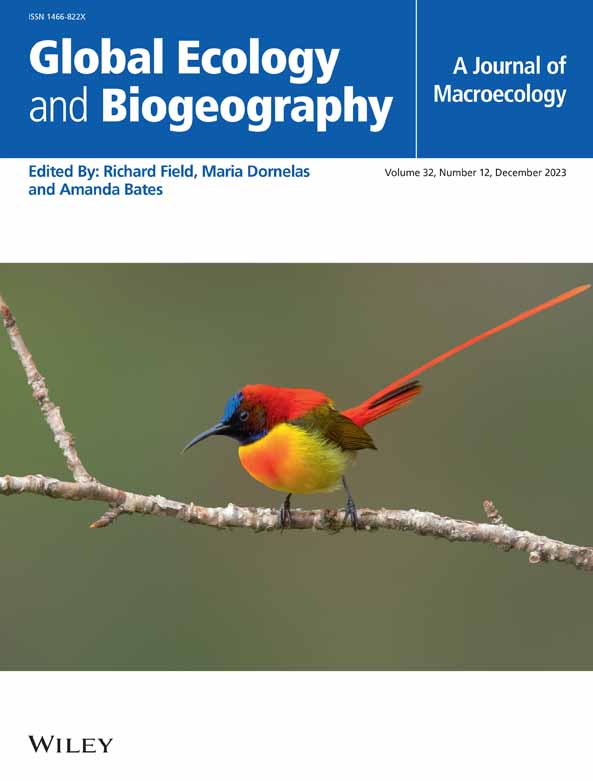Multifaceted Precipitation Patterns Impact Biocrust Functionality in Drylands: A Cascade of Variability via Species Replacement in Soil Microbiota
Abstract
Aim
The influences of climatic gradients on biodiversity and functionality in arid ecosystems are increasingly evident. While soil microbes are susceptible to precipitation patterns, the mechanisms through which their variations affect the delivery of multiple ecosystem functions via microbial communities are poorly understood. Here, we examined the direct effect of precipitation gradients on multifunctionality and the indirect effect mediated by soil microorganisms and edaphic properties in drylands.
Location
Northwestern China.
Time Period
Field investigation in 2020.
Major Taxa Studied
Multitrophic microbiota in biocrusts.
Methods
We analysed 38 years of daily precipitation data to quantify multifaceted characteristics and spatial variations, including gradients of mean amount, frequency, and variability. Community structures of heterotrophic bacteria, fungi, and photoautotrophic cyanobacteria were determined via amplicon sequencing to measure taxonomic and phylogenetic α-diversity and spatial turnover. Local multifunctional levels (α-multifunctionality) and their pairwise dissimilarity/asynchrony (β-multifunctionality) were depicted based on functional variables related to biocrusts. We investigated how precipitation and microbial diversity jointly influence soil multifunctionality.
Results
We found historical precipitation variability, rather than mean annual precipitation, emerged as the primary driver promoting functional variance, leading to a convergence of less beneficial microbial species under high precipitation fluctuations. Although species richness across trophic levels positively influenced local functions, phylogenetic dissimilarity was a key predictor for soil photoautotrophs. As a β-diversity component, species replacement consistently enhanced multifunctional dissimilarity and asynchrony of biocrusts. Notably, a cascading process was identified where the indirect effect of precipitation heterogeneity, regulated by microbial β-diversity, accounted for a higher proportion of variance in β-multifunctionality than direct climate influence.
Main Conclusions
This study highlights the importance of precipitation variability and indirect climate impact mediated by soil microbiota. It contributes to a deeper understanding of the real-world consequences of altered precipitation on drylands, providing valuable insights for interventions to mitigate climatic perturbations by managing soil community properties.

 求助内容:
求助内容: 应助结果提醒方式:
应助结果提醒方式:


